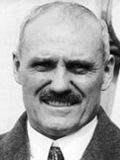The latest issue of The McKinsey Quarterly has an article titled “Reinventing innovation at consumer goods companies.” If you’re in this sector, it’s a relevant and insightful read. If you’re in a product design company, it’s old news.
Nevertheless, the highlights are worth digesting :
On predicting the success rate of new products :
“Consumers are notoriously poor at articulating needs or benefits beyond those they have already experienced: when asking them to imagine true innovations, companies get mixed results at best”
On innovation outside the core :
“…a recent analysis across major consumer goods categories demonstrated that the overwhelming majority of US patents arose outside the top seven global consumer goods companies. In the laundry and home care category, for example, 95 percent of the patents filed from 2002 to 2005 did not originate within them. Indeed, the leading companies constitute only a tiny fraction of the world’s consumer goods innovators.”
On sourcing new ideas and the requirement for peripheral vision :
“…our research suggests that few companies look beyond their advertising agencies, to the many alternative external sources of insights: suppliers, venture capital firms, entrepreneurs, and inventors. This oversight may prove costly, since external partners can spot trends, create competition for complacent in-house teams, share technologies and manufacturing processes (in some cases developed for other purposes), and even craft fully developed product concepts. […] Given the power of outside ideas, companies should experiment with various approaches for sourcing, jointly creating, and commercializing intellectual property with external partners.”
The article concludes by saying something that will ring true with many industrial design companies :
Such approaches [to success] might, for example, include iterative rapid prototyping, which uses product concepts to create an ongoing dialogue with consumers whose comments shape the design throughout the development process.





